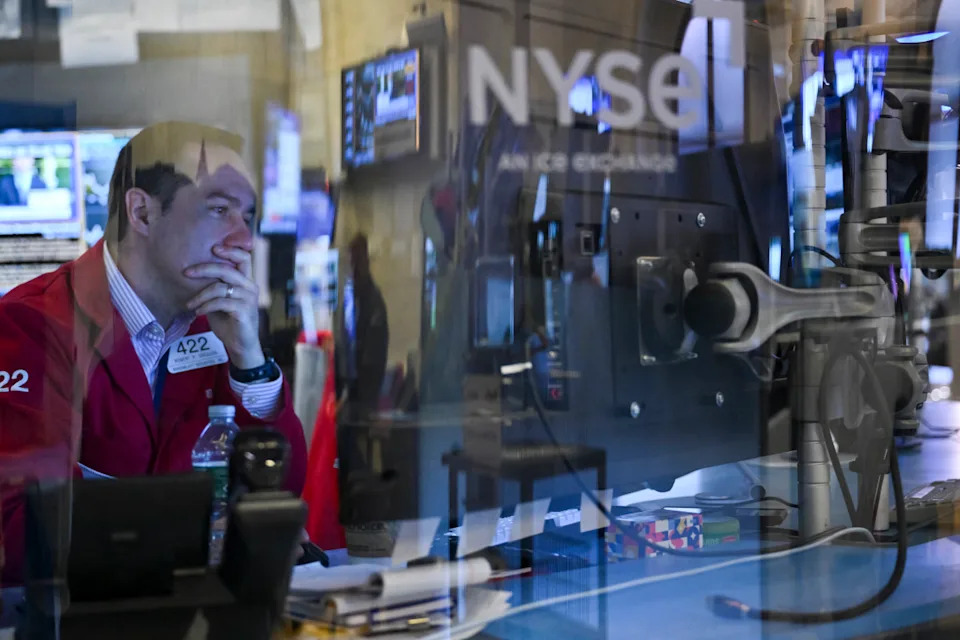Economy this week: Jobs, tariffs, recession watch
Many people interested in the state of the economy are asking this question: "Is a recession really coming?"
The question is valid, given the stock market's wild ride since President Trump unveiled his tariff plan on April 2.
💵💰 Don't miss the move: Subscribe to TheStreet's free daily newsletter 💰💵
Within a week, with stocks down as much as 10%, the president and his administration dialed back their tariff ideas for 90 days (except for China) and invited every country who want to export goods and services to the United States to call his staff.
Some countries have called with ideas, including Japan, South Korea and Vietnam. But not China, even if it is facing 145% tariffs on some products.
President Trump says both sides are talking. China says no one is talking.
Related: Apple's goal this week: Prove it still has its mojo
The president said Friday a number of trade deals with other nations are near ready to to be announced.
But the president wouldn't say which deals are ready, when they will be announced and what the details might look like.
That's likely to generate skepticism and/or brain fatigue that deals are near. Trade deals come together in months, not days or weeks.
Probably the best strategy to deal with all the noise: Ignore all promises of deals until there are actual deals with names named and actual deal texts.
Otherwise, you may lose your mind.
Tariffs talk generates big uncertainty
What is true and what is affecting the economy is that tariff wars have created massive uncertainty, according to the April Beige Book Report published by the Federal Reserve.
Reason: Before April 2, U.S, tariffs had averaged around 2.5%. The base tariff would be 10%, with foreign auto imports subjected to 25% tariffs, and China, source of most electronics, subject to tariffs as high as 145%.
The tariffs, if allowed to take full effect, would be the highest in more than a century and could start a global trade war with dire consequences for everyone.
If the Fed's report is accurate, the uncertainty does have a bit of a bite. There is some business activity going on as businesses and consumers stock up on goods, from groceries to new car purchases to get ahead of tariffs.
And many Trump supporters became dismayed because they were looking forward to tax cuts, deregulation and a booming stock market.

Businesses are trimming expansion plans, cutting travel and other expenses, but widespread layoffs are not yet out in the open.
Futures trading, meanwhile, suggested stocks will open lower on Monday after markets rebounded for a change.
The Standard & Poor's 500 Index was up 4.6% for the week. The Nasdaq Composite Index jumped 6.7%, and the Dow Jones Industrial Average added 2.45%.
Related: Legendary fund manager sends curt message on bear market risk for S&P 500
Meta Platforms ( META ) , Amazon.com ( AMZN ) and Nvidia ( NVDA ) all jumped more than 9% on the week. Meta and Amazon report quarterly results after the market closes on Wednesday and Thursday, respectively.
Oil prices were lower. The 10-year Treasury yield fell to 4.24% from 4.33% a week earlier. Mortgage News Daily, a housing news site, estimates that the rate on a 30-year mortgage had fallen to 6.8% on Friday from 7% on Monday.
The reports to watch
Tuesday
The April Consumer Confidence report from the Conference Board. Due at 10 a.m. ET, this will confirm if the worries cited by the University of Michigan's Consumer Sentiment Survey last week are real. The Conference Board's March report showed current expectations were down a little, but its future expectations data was the worst in 25 years.
Wednesday
Gross Domestic Product. This is the first measure of how the economy performed in the first quarter. It may show some weakness. Many economists expect that to be the case. Bank of America last week cut its 2025 and 2026 U.S. growth forecasts. Toronto economist David Rosenberg's conclusion after reading the entire Beige Report is that around 60% of the U.S. economy is either already in recession or "on a knife’s edge."
Related: Analysts reboot IBM stock price targets after earnings
Personal Consumption Expenditures Index . This is the Federal Reserve's preferred inflation measure and is part of the GDP report. The overall index is expected to show a 2.5% year-over-year increase with core PCE (which excludes food and energy) rising 2.7%.
Pending home sales for March , from the National Association of Realtors. This one may surprise to the upside because weather in the South stabilized after ugly storms in January and February.
Thursday
Initial Jobless Claims from the U.S. Department of Labor. If we are going to see the first blooming of a recession, you'll see it in this report.
Purchasing managers Index reports from the Institute for Supply Management and the final March report on Manufacturing from S&P Global. Both sets of reports have detected growing business concerns about the new tariff plans. S&P Global's survey suggested that GDP was growing at a 1% annual rate in the first quarter.
Related: Alphabet unveils answer to major AI question
Friday
The March jobs report. As always, this is the most important economic report of the month. The numbers to watch are changes in non-farm payrolls and the unemployment rate, generated from different sets of data.
The consensus is that payrolls grew 130,000 in March, down from 228,000 in February.
The unemployment rate is expected to be unchanged at 4.2%. Given how the data are collected (in the first half of any month), it may be some time before real stress appears in the the jobs reports.
Related: Veteran fund manager unveils eye-popping S&P 500 forecast
